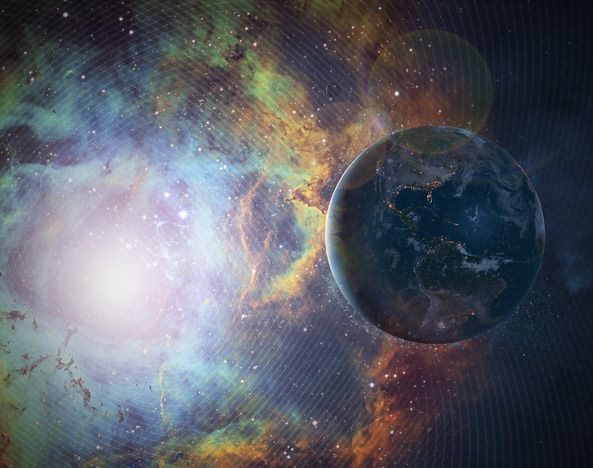A supermassive member of a monster lineage that once caused several mass extinctions on ancient Earth could create a true apocalypse on Earth-like planets.
According to Space, a group of scientists has recently discovered a terrifying type of supernova capable of tearing apart the atmosphere of a planet, rendering the vital “shell” for life irrecoverable after many years of such an event.
A supernova is the brilliant death of a star. This beautiful event occurs commonly in two ways: a large star suddenly has its core collapse when energy runs out, then explodes; or a star evolves toward death sequentially through steps of red giant – white dwarf, then suddenly reignites its internal nuclear reaction, resulting in an explosion.

Graphic illustrating an Earth-like planet being “bathed” in the light and radiation of a supernova – (Image: SCIENCE PHOTO LIBRARY).
Regardless of how it occurs, supernovae unleash a sea of lethal radiation that can devastate unfortunate nearby planets. Many previous studies indicate that Earth has been “flooded” multiple times by the radiation from supernovae, leading to mass extinctions.
One example of a supernova that humanity might have the chance to observe is Betelgeuse, one of the brightest stars in the sky, which is forecasted to potentially explode at any moment as it has entered the “dying” phase.
The moment Betelgeuse could explode might be within this generation you are living in, or it could be millions of years away. At a distance of 600 light-years, it is too far to devastate Earth but close enough to bathe the entire planet for several days in light brighter than a full moon.
However, Betelgeuse will not create the type of catastrophic supernova identified by the group of scientists from the Department of Astronomy and the Department of Physics at the University of Illinois Urbana-Champaign; the Department of Astronomy at the University of Kansas; and the Department of Astronomy at Washburn University (USA).
In a recently published study on arXiv, the authors demonstrate that some aging stars may be surrounded by a thick disk of material. After the initial supernova explosion, a shock wave forms and strikes the disk, heating it to extreme temperatures.
This disk will emit lethal X-rays, traveling across vast distances. Planets unfortunately located within a 150 light-year radius of the “monster” could lose up to 50% of their ozone layer. If they are closer, the consequences could be a torn atmosphere with no chance of recovery for many years.
Months or years after the event, the “peeled” planet will be relentlessly bombarded by X-rays. Hundreds or thousands of years later, cosmic rays will continue to flood in, preventing its biosphere from having a chance to recover.
Fortunately, there are currently no nearby candidates for X-ray supernovae threatening Earth. However, in habitable regions of the galaxy, many other Earth-like planets could be endangered because there are still many potential stars out there that could become this lethal type of supernova.


















































